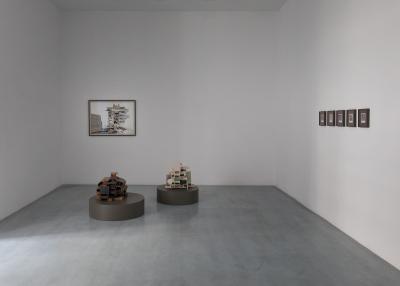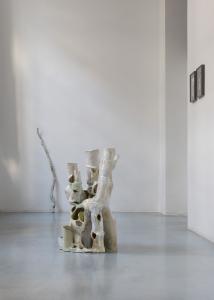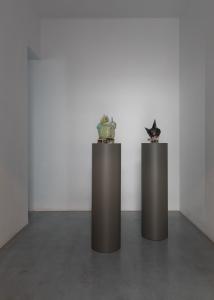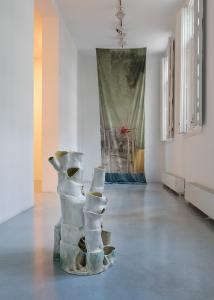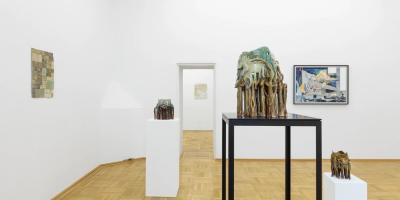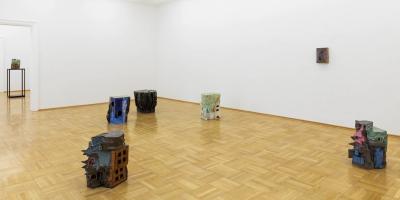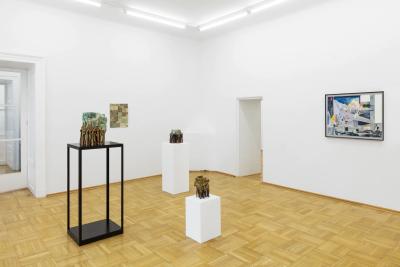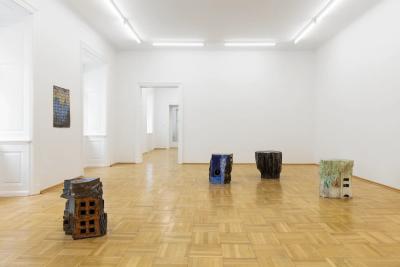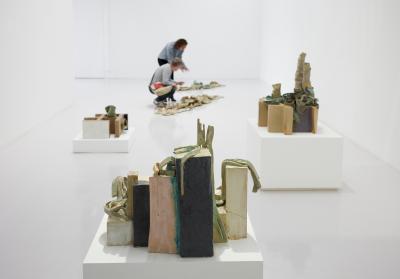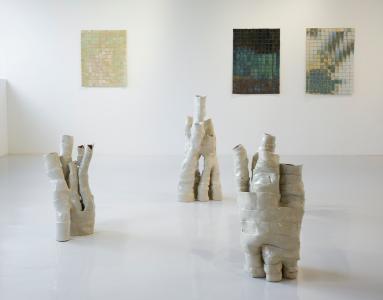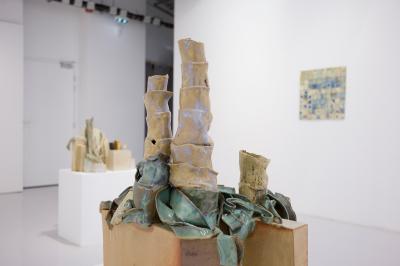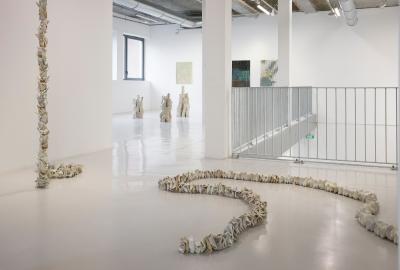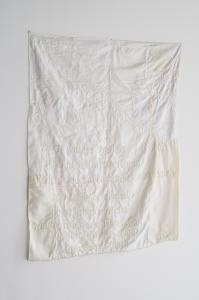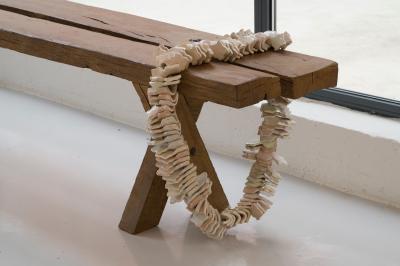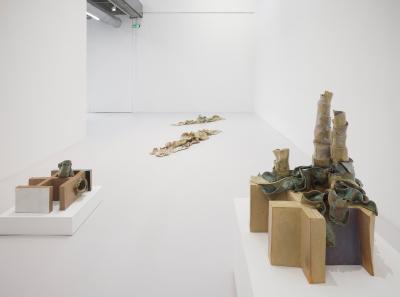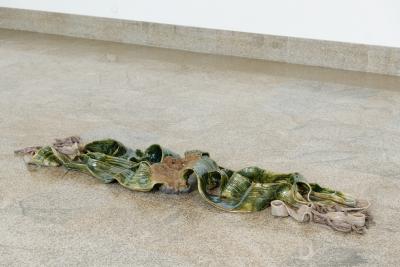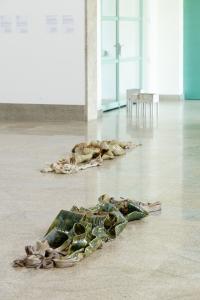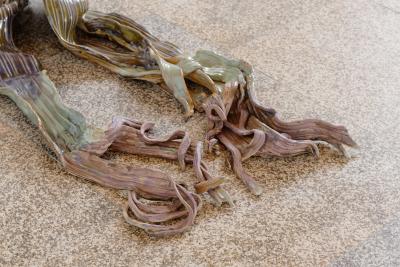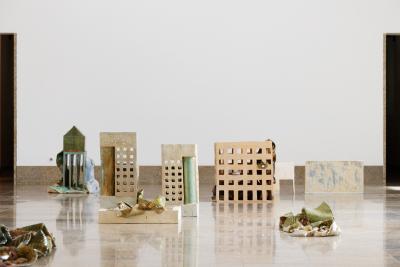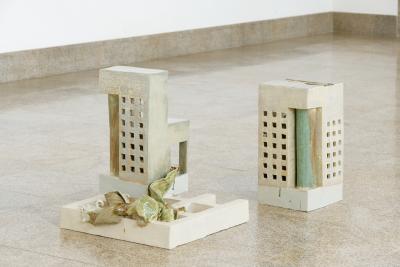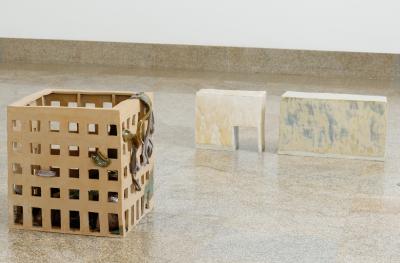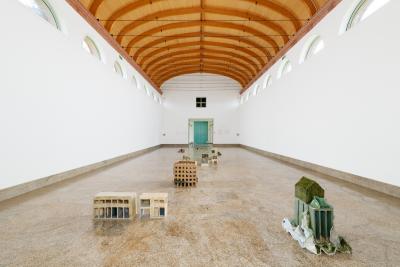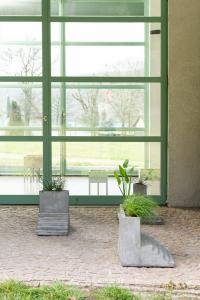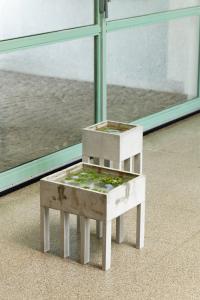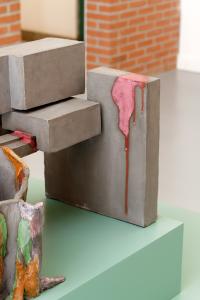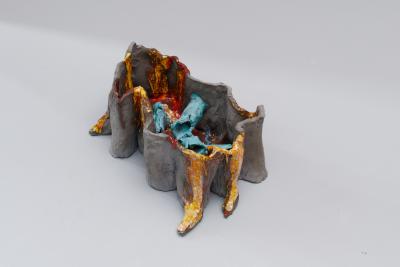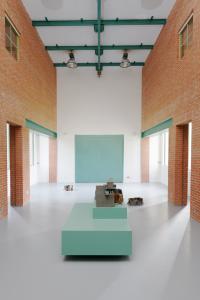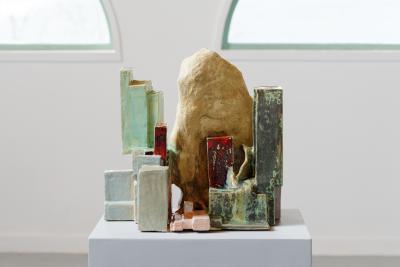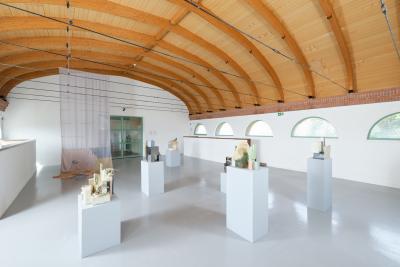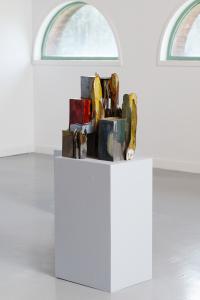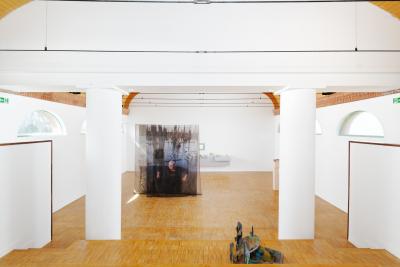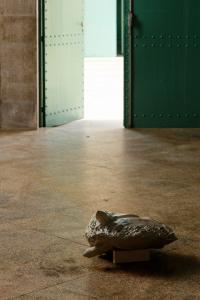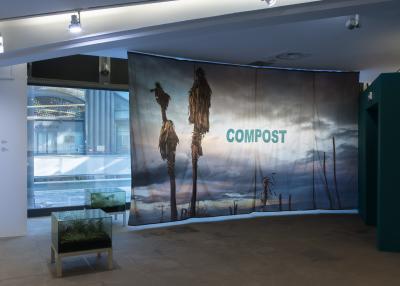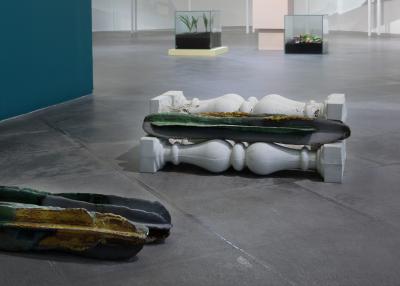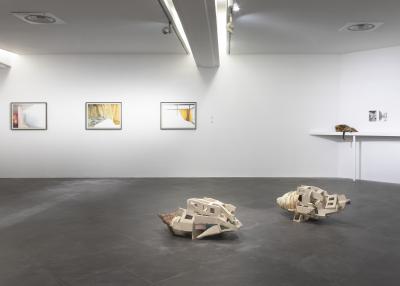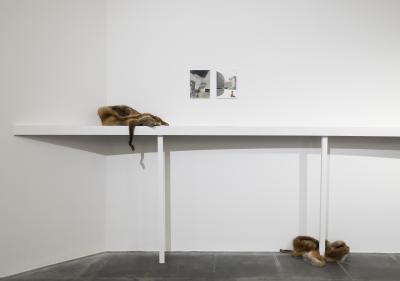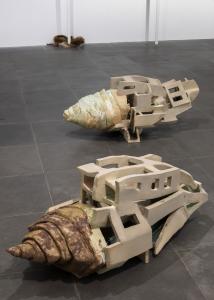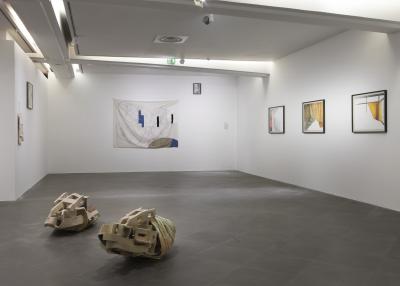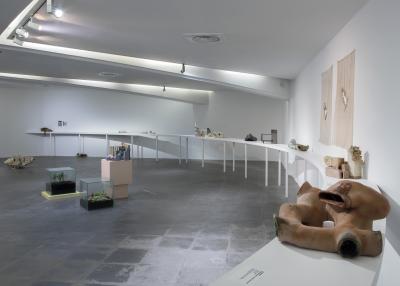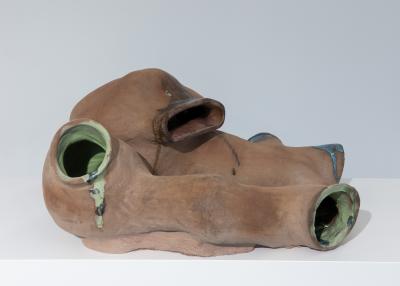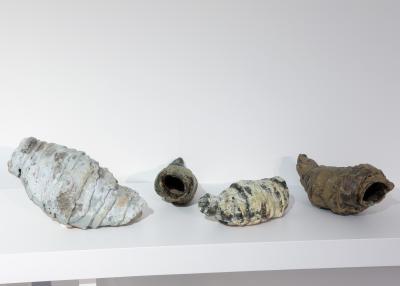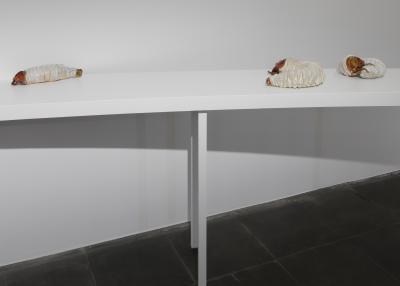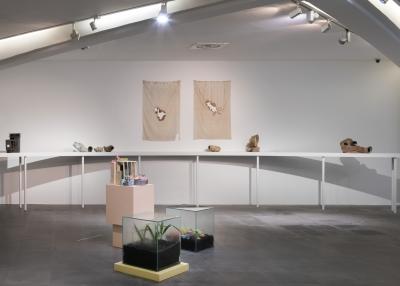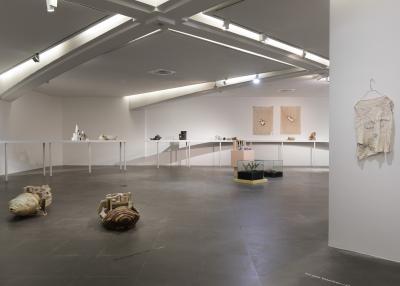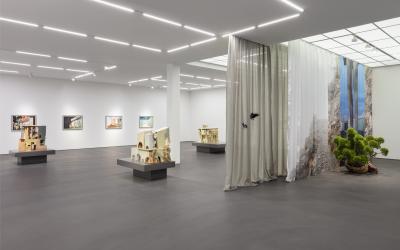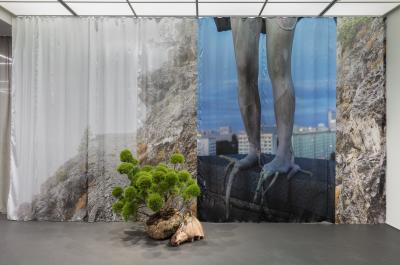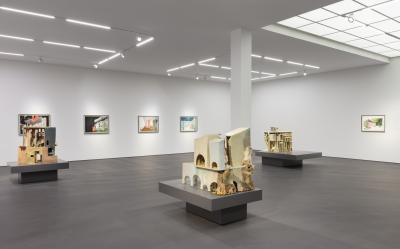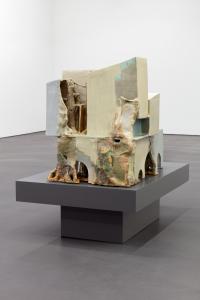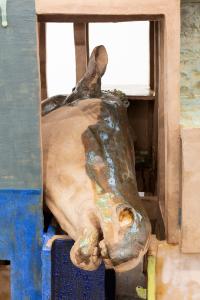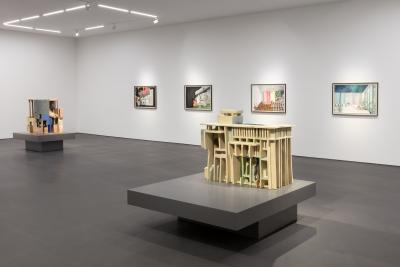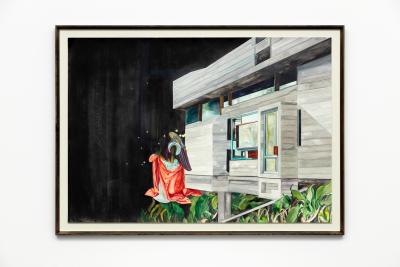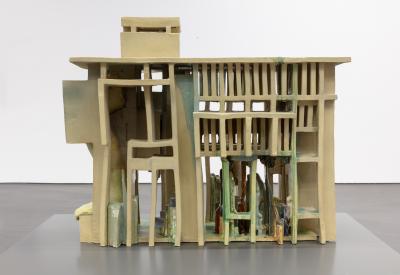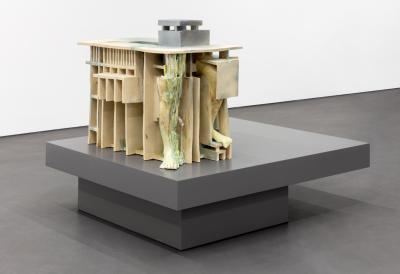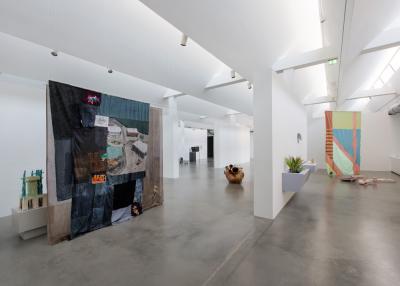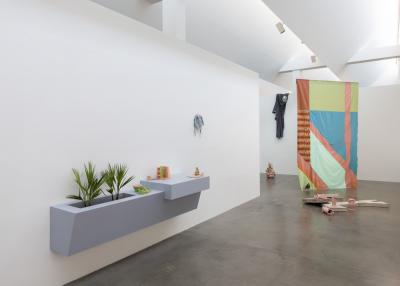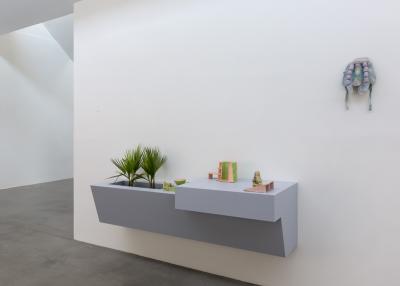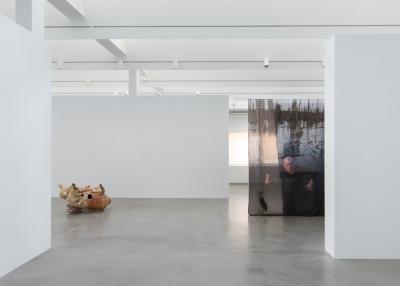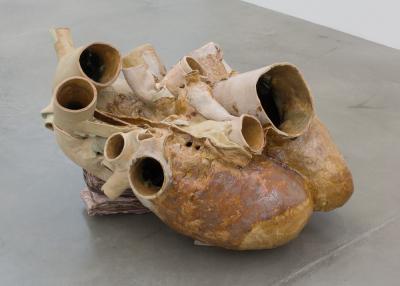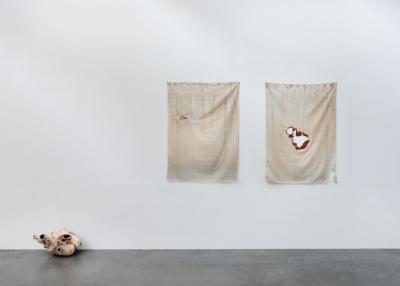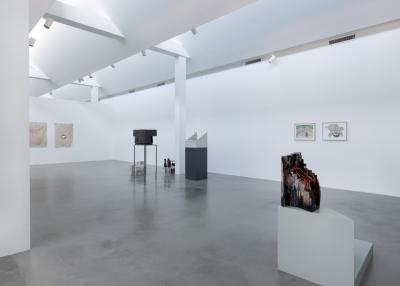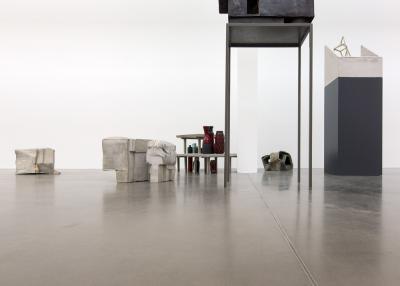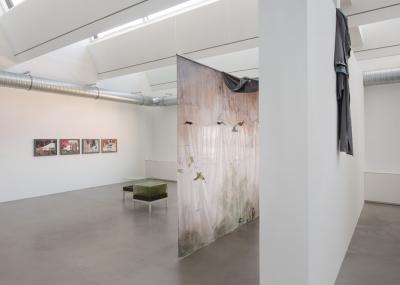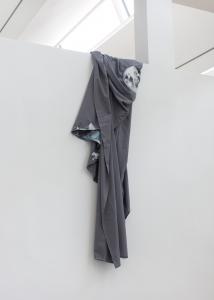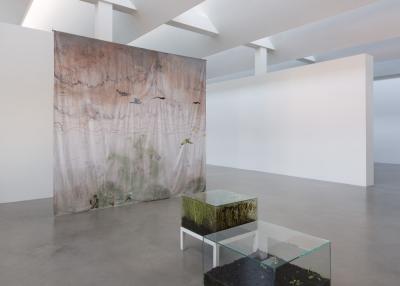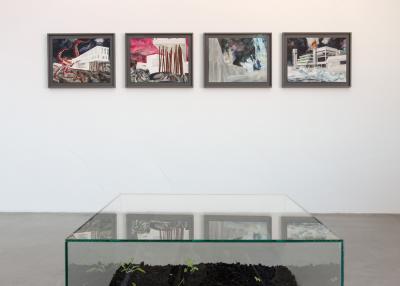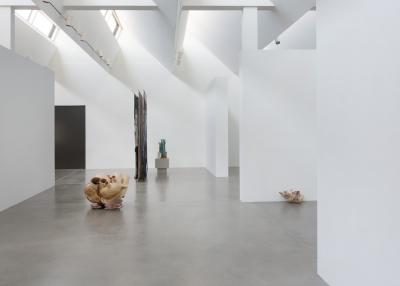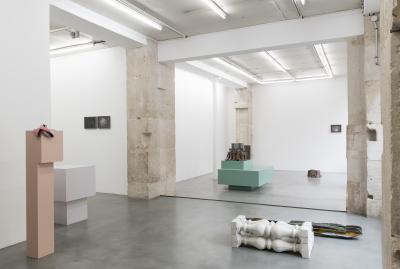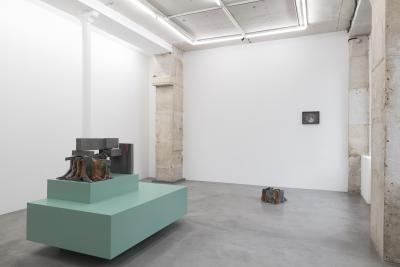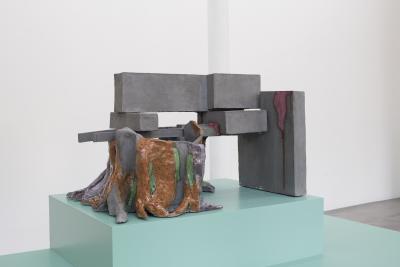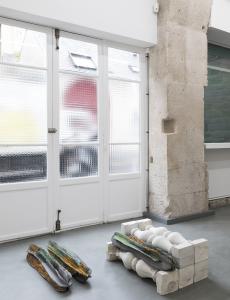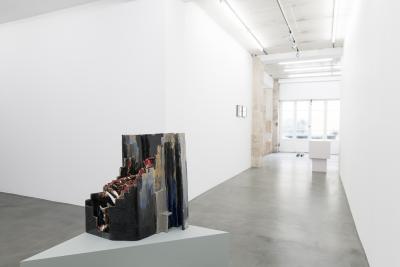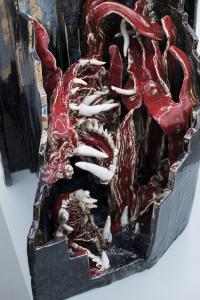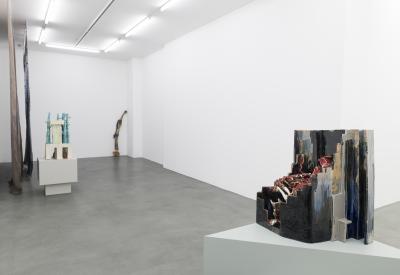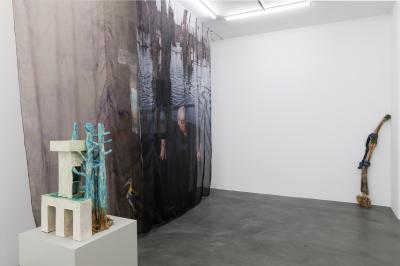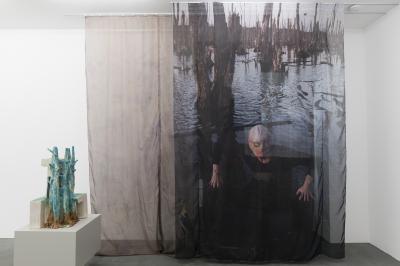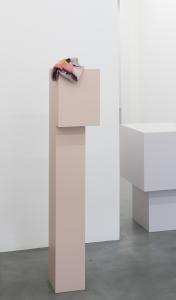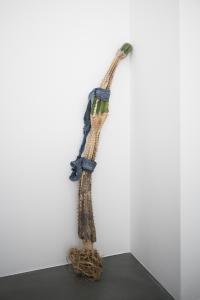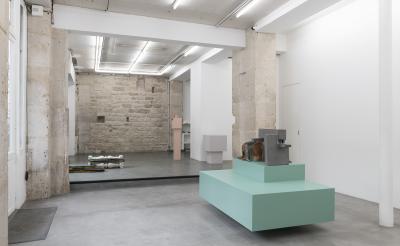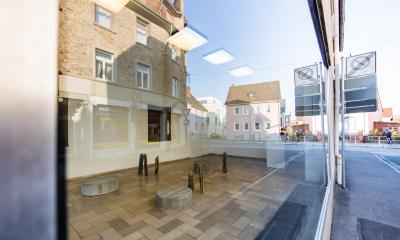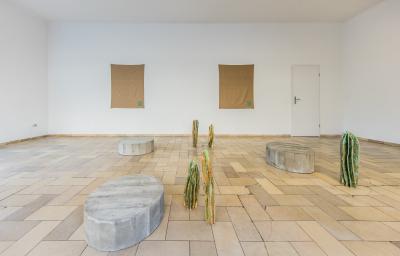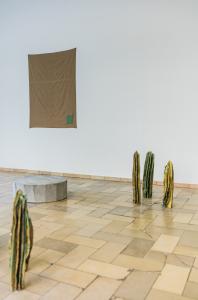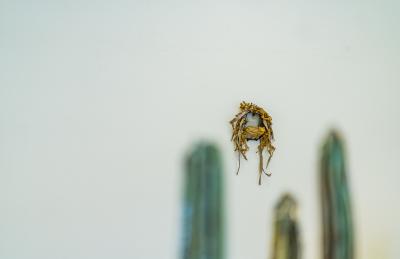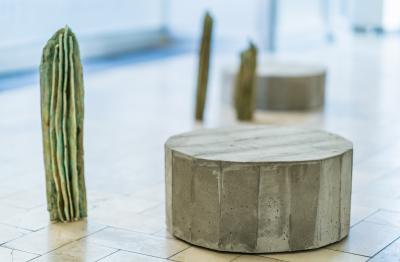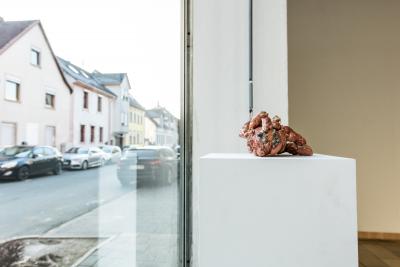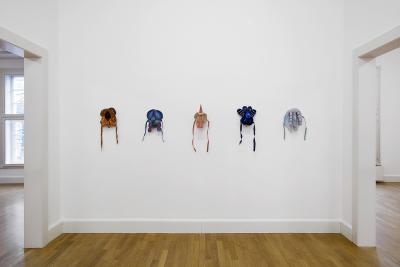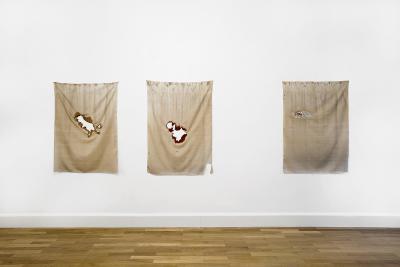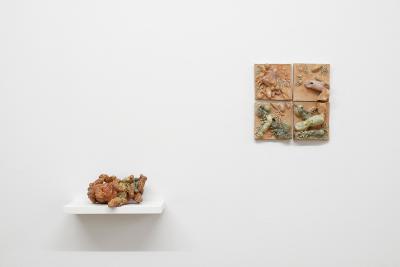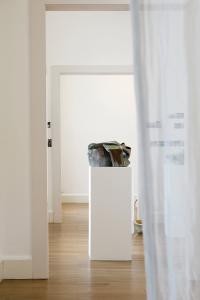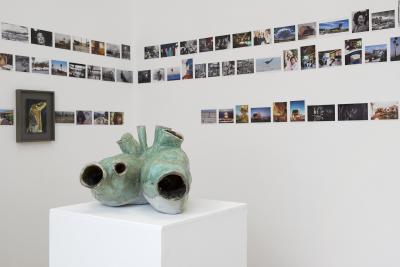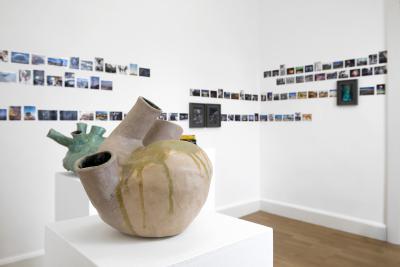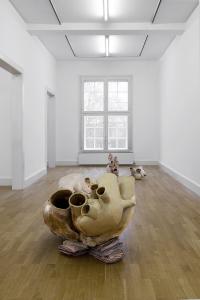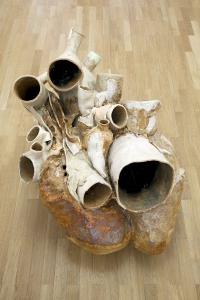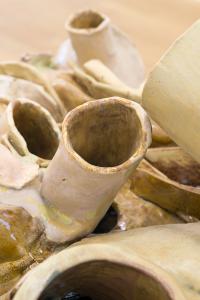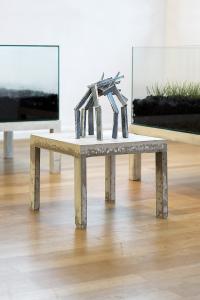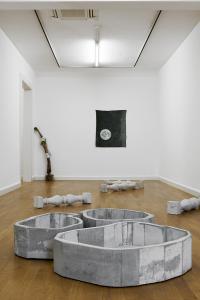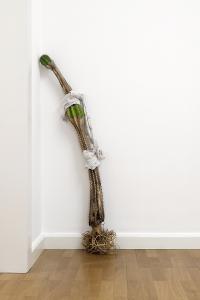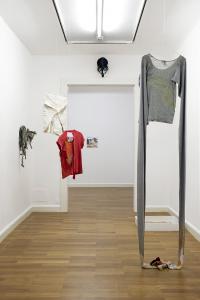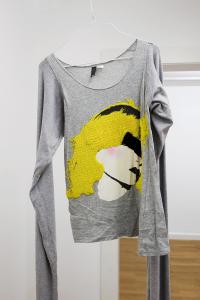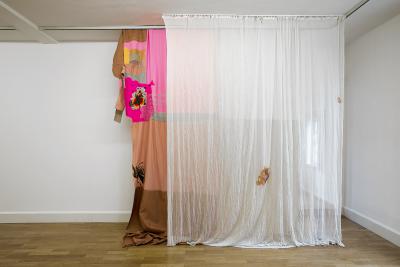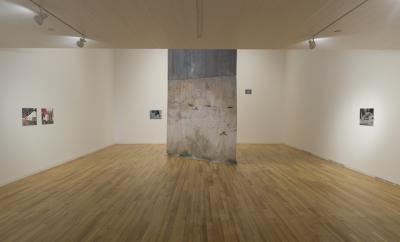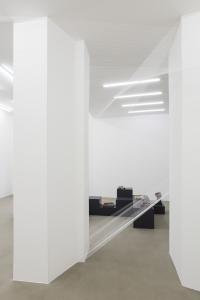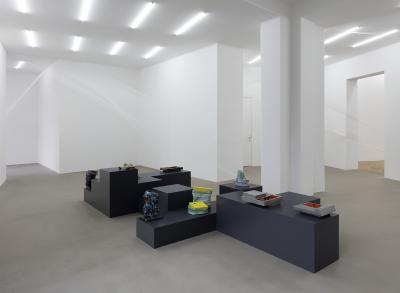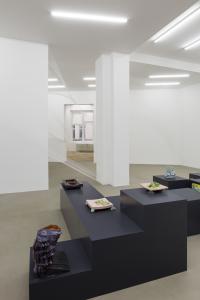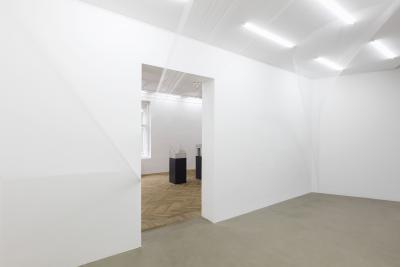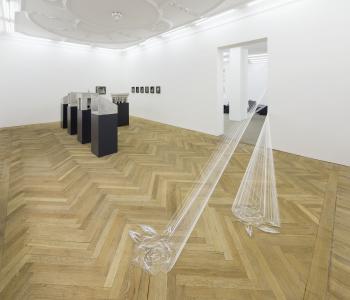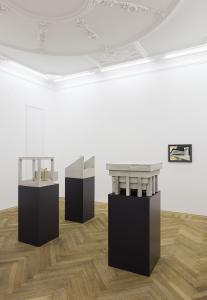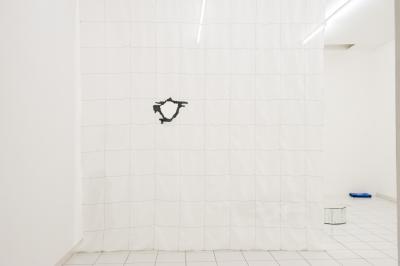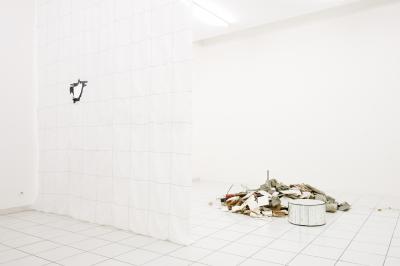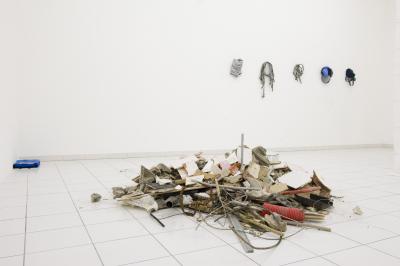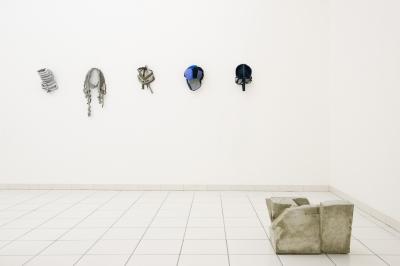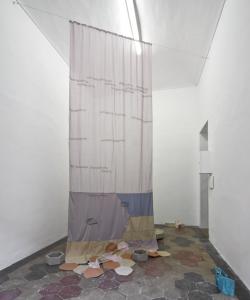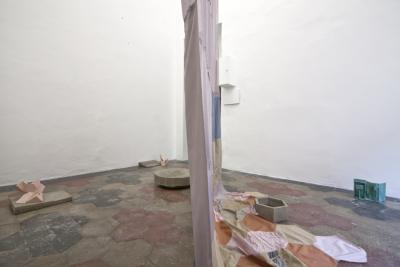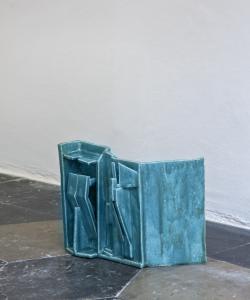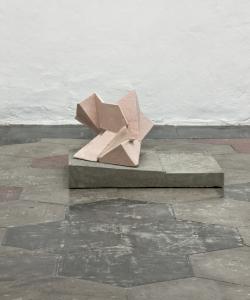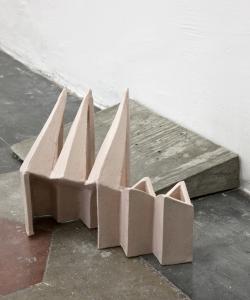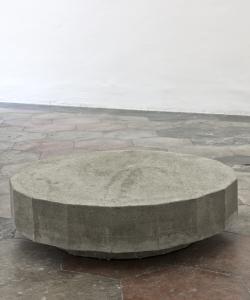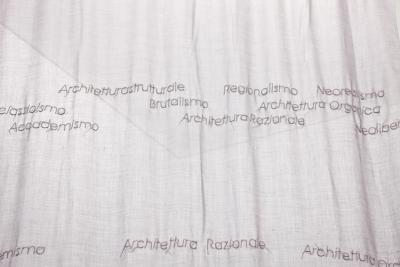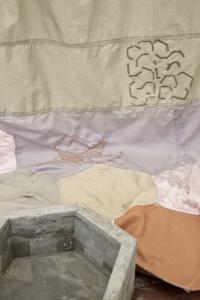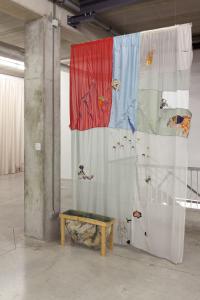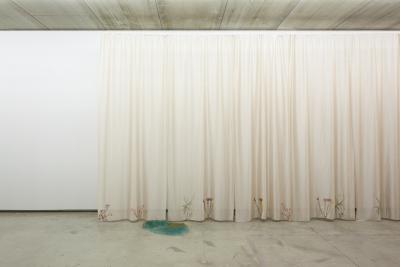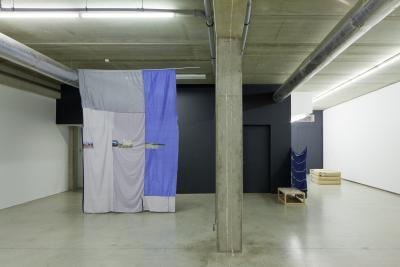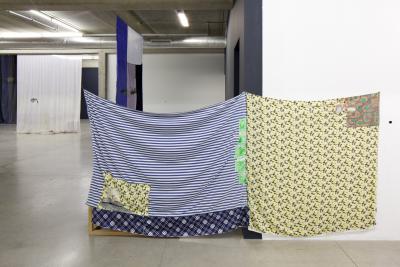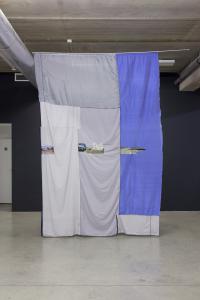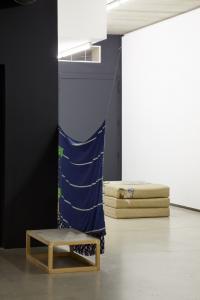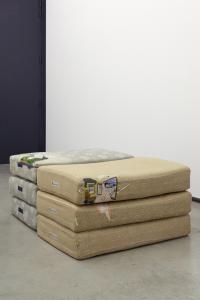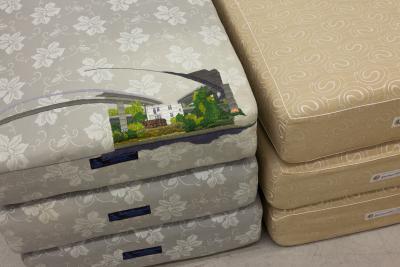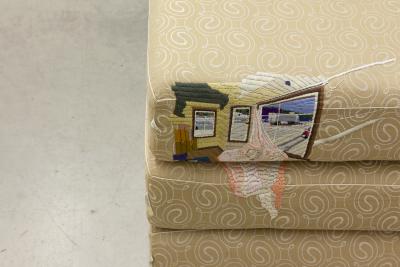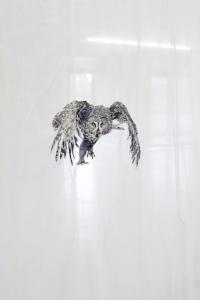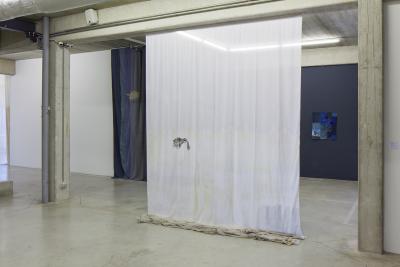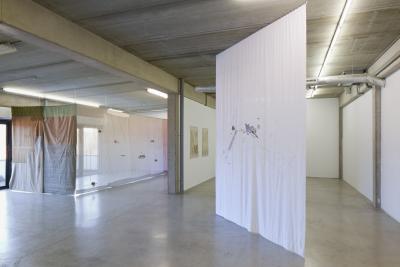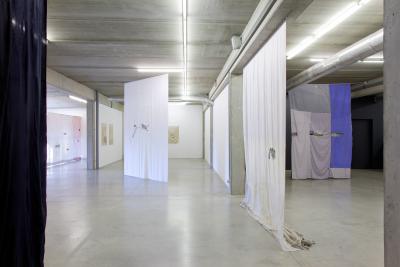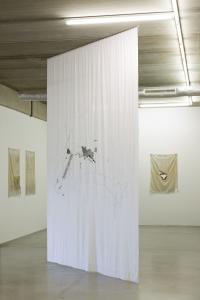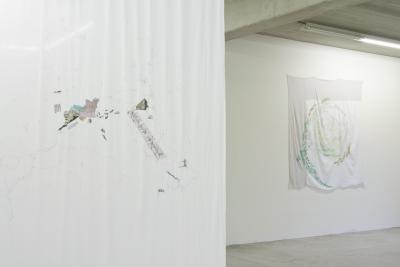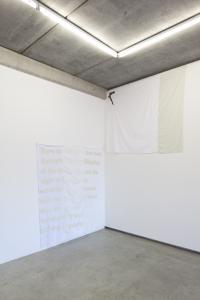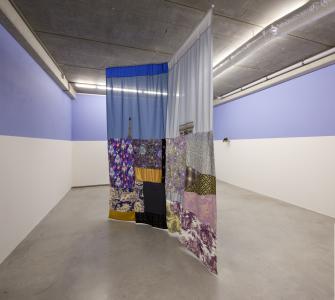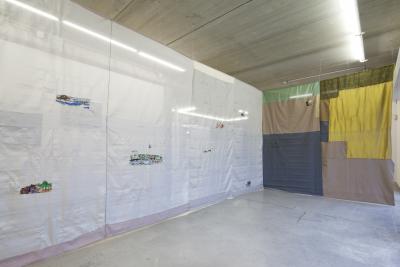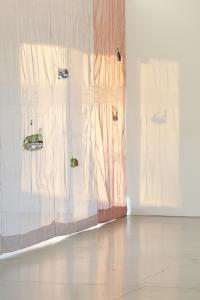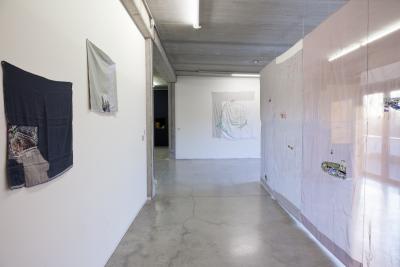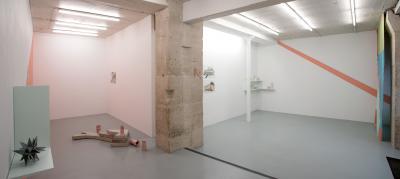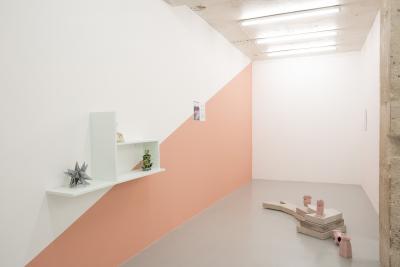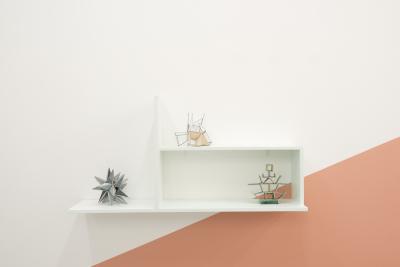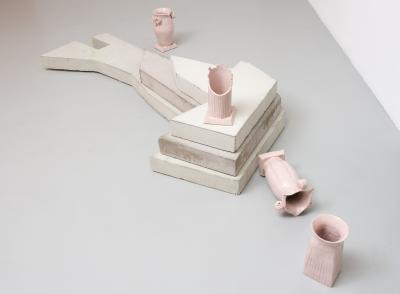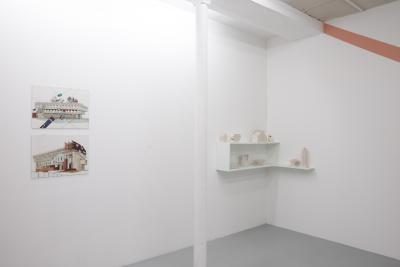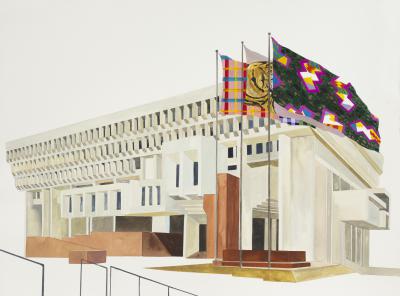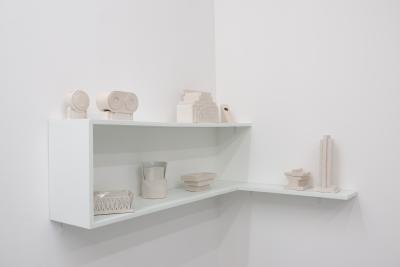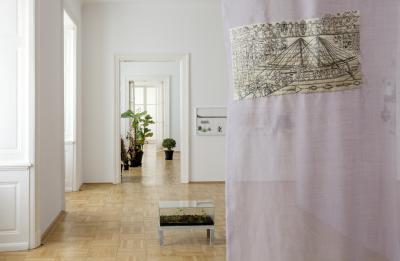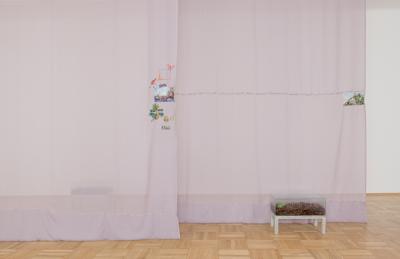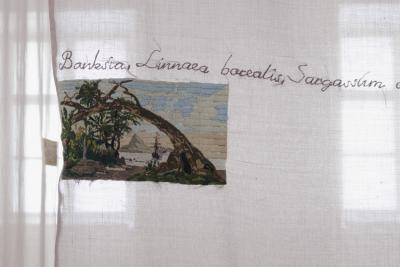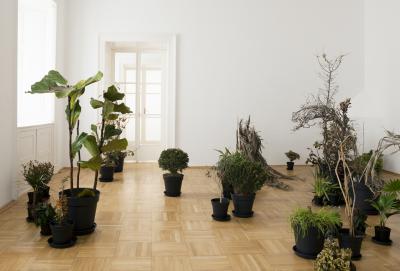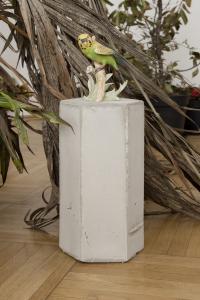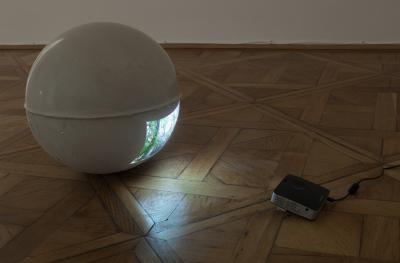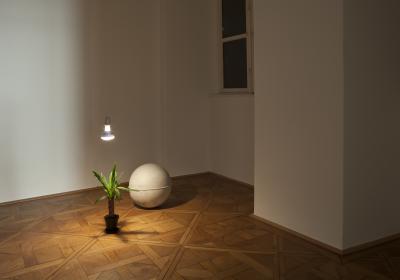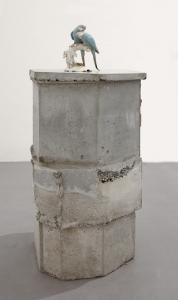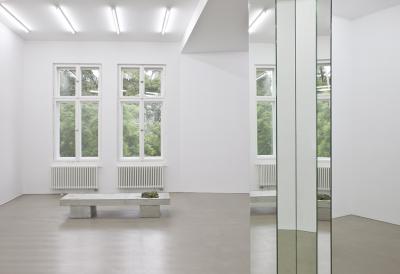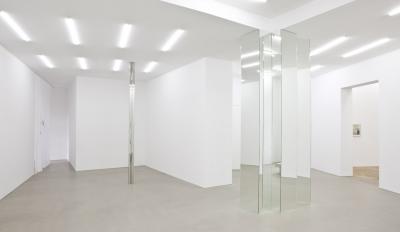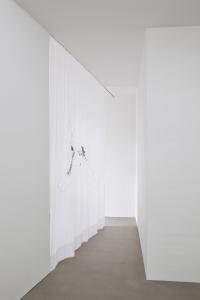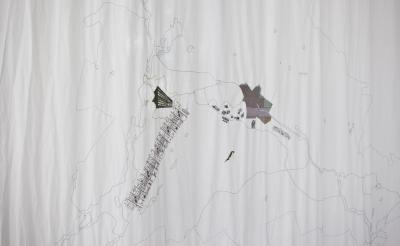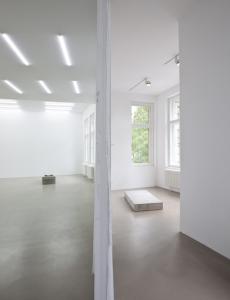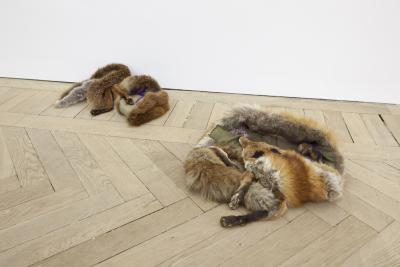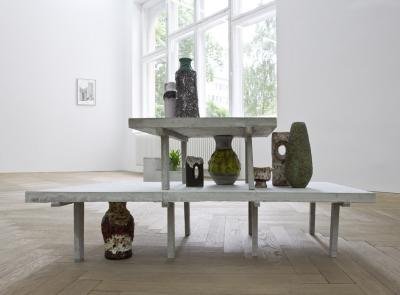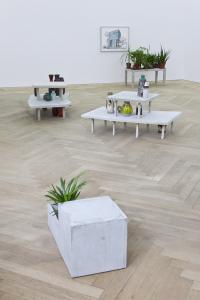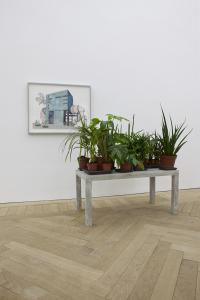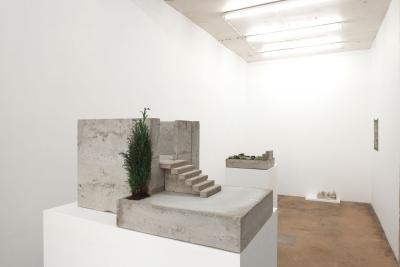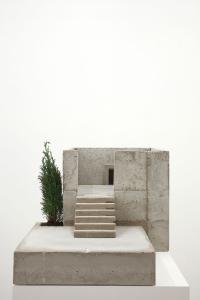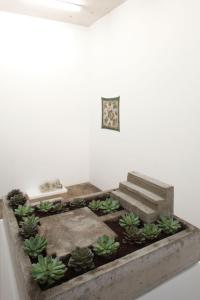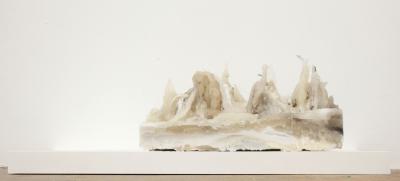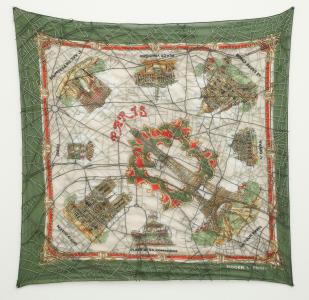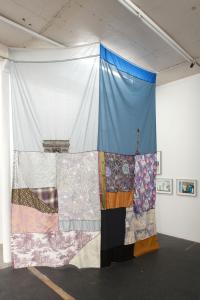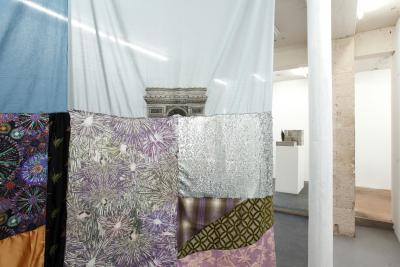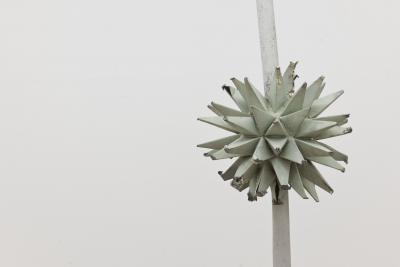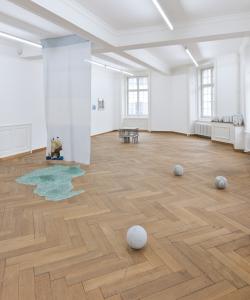Psychotropic Landscapes, Annet Reckert
Ballardian Intro
Hooked by the eponymous promise of the psychotropic, those visiting the exhibition muster up hope for measures that might expand their consciousness. A thoroughly useful attitude in view of art per se and, at that, for a special trip proposed by Isa Melsheimer with her show for the St.dtische Galerie Delmenhorst. It first takes us to Vermilion Sands, to the setting of a literary creation by James Graham Ballard (1930–2009). With its extravagant coastal villages, the C.te d’Azur may have been the source of inspiration for the British science-fiction author, perhaps even the cities and deserts in the American West or paintings by Hieronymus Bosch and Yves Tanguy. His short story The Thousand Dreams of Stellavista from 1962 is set in Stellavista, a village that lethargically plods along. There where the residual heat of former decadence glistens over the overgrown estate, protagonists Howard and Fay Talbot move into PT house no. 99. It is a psychotropic house whose outer appearance in the shape of a giant orchid tells of its former owner. Unlike a static house, a PT house can turn its inner life outward. Set in motion at the touch of a button, the incessant deformations and discolorations of its plastex walls reflect the mental state of its residents. It feels, it reacts, it remembers. Individual and house transgress their subject-object spheres; it is “like inhabiting someone else’s brain.”. Howard eventually experiences how the history of the neurotic home is ominously connected with his existence. He barely escapes the stifling convulsions of the house, which now looks “like a surrealist nightmare, all the perspectives slipped, angles displaced ”. In an introductory cabinet to her exhibition, Isa Melsheimer illustrates this and other stories by J. G. Ballard with an installation that includes selected pieces of pottery, gouaches, and in particular sequencesof photographs found on the Internet or taken herself. As an enthusiastic cineaste and appreciator of architectural history, she arrangesvisual associations that feature desert landscapes, postmodern buildings, as well as celebrities from the art scene and show business. Legendary figures like Alfred Hitchcock, Grace Kelly, Andy Warhol, Yoko Ono, DennisHopper, or Siegfried and Roy appear, between them mundane swimming pools that sparkle in turquoise blue, obscure figures, corpses, and often tremendously fascinating mushroom clouds. Beauty and disaster establish a beguiling liaison, and all of it melts to become a setting for the delicately colored ceramic sculptures, which as model organic-tectonic-style buildings would have undoubtedly been popular with Howard and Fay. J. G. Ballard’s animated structures inspired the sculptural process. Moreover, the titles of the works suggest that they are also an homage to the legendary Maisons Bulles (bubble houses) designed by the Hungarian Antti Lovag, as well as to the cell and shell houses by Pascal Häusermann and the organic buildings by Jacques Gillet.
Bacteria
Vacillating between the apocalyptic blues and a futuristic fever, Isa Melsheimer sends her public into different zones in which times from eons ago and visions of a future world merge. With her sculptural macro Bacteria, 2017, along with its accompanying four-part tile ensemble she buffs up the grimy image of those microorganisms with which terrestrial life began around 3.5 billion years ago. Here, bacteria are the quintessence of becoming and passing away. They already existed unimaginably long before humanity, and they will continue to exist long after it has perished. The chromaticity of the enchanting sculpture Bacteria is unsettling, as is the gloss of its all-too-human skin tones with their shimmering bluish-green nuances, which recall our veins. The imaginary ceramic invention, which is touchingly reminiscent of a naked animal baby, calls to mind the fragility of the structure of our world. This is accompanied by the delicate cloth works in the space. Created in 2012, they are singed, shabby curtains that Isa Melsheimer embroidered. With a snow owl on the wing camouflaged by the paleness of the ground, with beadwork edging that creates the impression as if the large burn holes in the cloths are now treated wounds. Looked at from a mapping bird’s-eye view, they become invigorated forms, turning into animals, islands, continents.
Heart Chamber
In fall 2017 Isa Melsheimer was able to pursue her artistic research as an artist-in-residence on Fogo Island off the coast of Newfoundland. From her studio she saw whales passing by, while her research into the marine mammals in the Internet led to the discovery of horrifying images: a single mouse click took her to countless photographs of beached whales that had died in agony and whose bloated bodies were about to burst. In 2015 and with a huge media contingent, the 300-kilogram heart of a blue whale that had beached itself on the coast of Newfoundland traveled to Brandenburg in order to in turn be plastinated there for a Canadian museum. In 2018 this gruesome journey inspired the creation of a heart sculpture threesome—two smaller pieces of pottery and an extremely weighty, large work. The small heart sculptures hold their own as sassy, rosy creatures; one of them is set upright like a nude, positively obscenely posing beauty. The large heart, whose chromaticity alternates between raw earth tones, shiny caramel, and something leathery, propels the exhibition in any direction imaginable. A gaze fired by one’s imagination that slides over the monstrosity follows the rises, layers, chasms, and trenches of a landscape. Viewed from a different perspective, one believes to be looking at an amorphous creature with lappets and wrinkles, with swelling forms, lewdly sprouting tubes, crust, and severed tentacles. And those on the move speleologically explore the visible ducts, caves, and propped up vault of the natural structure, while multidisciplinary thinkers see a fantastic pump motor—and are from now on driven through the spaces by its throbbing and droning.
Machines That Connect the Earth with the Sky
If the Städtische Galerie Delmenhorst, Haus Coburg, were a psychotropic house, it would pulse with rapture despite the ensemble presented in the winter garden. The long-legged Pimoa Cthulhu from 2017, whose title makes reference to the species of spider of the same name and, tellingly, to the long-since classic horror and fantasy world of H. P. Lovecraft joins company with two in-vitro sculptures made of concrete, glass, soil, and vegetation. Wardscher Kasten, Fogo Island (The Wardian Case, Fogo Island) from 2018 is a hermetically sealed system in which seeds that the artist collected on Fogo Island, and which cannot be more closely identified, are left to their own devices. The Brit Nathaniel Ward invented such cases in the eighteen-thirties, making plants transportable even over long journeys by sea and thus lending wings to the hunt for plants in the service of the colonial powers. Isa Melsheimer’s greenhouse sculptures are miniature experimental biotopes, each of which contains a specific location. As minimalist monuments they remind us that as the first completely terrestrial entities it was plants that created the atmosphere. In his fundamental criticism of our zoocentric worldview, Emanuele Coccia writes: “By the same token, photosynthesis is a big atmospheric laboratory for the transformation of solar energy into living matter.”. Vegetation, every plant, is a “machine that connects the earth with the sky.”⁴ In Isa Melsheimer’s postmodern sculptures, after a long time it is mostly ferns or the horsetail that begin to grow. In Haus Coburg’s winter garden she devotes a work of her own to the latter, a living fossil whose hollow stalks, stiffened by knots, inspired French architect Jacques Cou.lle’s curved concrete roofs made using ceramic tubes (Fus.es C.ramiques) in the forties.
Dangerous Beauties
The burgeoning glass mountains in Melsheimer’s psychotropes develop their very own charm with the changing incident daylight. The shrunken beauties wickedly and pleasantly glisten from a dark olive green and brown to the turquoise and glacial colors of their sharp-edged peaks—and yet they are very profanely a metamorphosis of commercially available wine bottles. Each mountain seems like a whipped up fluid that has solidified into crystal, and when visitors meander around them like drones with their gaze lowered, then they are reminiscent of the fantasy palaces from Michael Ende’s The Neverending Story, from the classic The Wizard of Oz, or tracking shots over monstrous urban nightmares in numerous science fiction movies. If one’s gaze glides over the glistening wonderland, it comes upon a number of gouaches that the artist combines with inkjet prints, with her own photographs of the unstable, bubbling terra of Iceland. Postmodern buildings such as the city hall in the Israeli city of Bat Yam, built between 1961 and 1963 by architects Alfred Neumann, Zvi Hecker, and Eldar Sharon, or the well-known Binoculars Building by Frank O. Gehry in Venice, California (1991–2001), into which a sculpture by Claes Oldenburg and Coosje van Bruggen is integrated, blend into her hot-cold environments in an unsettlingly harmonious way.
Changing Room
Isa Melsheimer mentally equips her fellow travelers for the last leg through her psychotropic realm in an unconventional changing room fitted with works made of fabric, including masks from the Insecta, 2014, and Trekking Masks, 2015, series. Christoph from 2009, gone over with stitching, seems downright obsessive; Gold Coast, 2010, combines meticulous embroidery with ripped fabric; Blondie from 2009 is a mutant whose ultra-long sleeves sink to the floor like aerial roots, where they sprout curious beaded membranes. Isa Melsheimer wore these pieces of clothing for a long time herself. They tell of love to a discarded skin, of wistfulness, and of the potential of any transformation. Because in terms of formal language the works allude to insects and reptiles, they fumble for opportunities beyond the humanoid. In this sense, the yellow-brown fabric work Kawasaki from 2009, presented in a display case on the floor like an archeological find, becomes a splattered milestone that in this zone once again revs up the public.
Ruins
Isa Melsheimer offers trekkers the dry branch of a cactus casually placed in the corner, the last destination to home in on her Ruins, 2018. A shabby-chic accessory with functional applications. After all, it provides a residual water reservoir and an urban utopia in the form of its immaculately washed root system that could be deployed anywhere. The sherbet colors so typical for Isa Melsheimer are faded; everything in this zone is immersed in a dystopian gray. Including the concrete sculpture Raumgruppe (Space Group) from 2013, which has just as much from anorganic chemistry as it does from Brutalist buildings from the fifties and seventies. Only those who are curious and willing to shrink into it discover a small, burgeoning pyrite crystal. After all, a detail that sparks hope. In the installation Ruins, 2018, the title otherwise delivers what it promises. The pushed over balustrade columns contribute their bit. However, even a standard postmodern home-improvement-center product can become a fantasy ferry boat: it beams one or the other back to Vermilion Sands; it leads literary adepts into the moonlit conventual complex in which Gottfried Keller’s Eugenia, disguised as a female monk, swings her iconoclasm-programmed hammer. The title of the cloth work Garten für einen glücklosen Schattten, Mond (Garden for a Hapless Shadow, Moon) from 2011 makes reference to this inspiration.
And Sarah Connor?
There are two of them in Psychotropic Landscapes. The artist hung a poster from Bravo magazine of the pop singer Sarah Conner, who grew up in Delmenhorst, in a bay, hidden by the large-format curtain work Fabric Fighting from 2014. And she placed a photograph featuring the long-since iconic movie character Sarah Connor from James Cameron’s film Terminator II in a bay window. An able-bodied woman bursting with vigor, a pre-cyborg that has supplied gender research with a substantial amount of material. Looked at psychotropically, if the two actually met, intense frictional energies would develop that would probably cause the bay to go into massive convulsions. Isa Melsheimer’s artistic cosmos is fueled by the suggestive potential of literary and scientific texts, by movies, and not least by observations of our urban surroundings as they transition into nature. The artist likewise traces the development of feminist theories from the nineties to the present. In this respect, she also accompanies the cyborg as a central figure in a post-gender world; to put it in more general terms, a critical reflection on the emancipatory potential of increasingly feasible interaction between the organic and the technological. In view of the anthropogenic destruction of our environment and the growing possibilities in the area of biotechnology, the science historian and biologist Donna J. Haraway long since proclaimed the Chthulucene. With this concept she predicts a world in which, far from any simple binary thought, machine, individual, animal, and plant intertwine on a tentacular, sympoetic level. In narrative allusions, some of these ideas flash up in Isa Melsheimer’s cosmos, yet they are not a condition for their contemplation. As unconventional sculptural pieces, her works develop radiance even without references. Like reactants that fall out of an inconceivable mental primordial soup, precisely and spatially set they little by little populate the floor of her psychotropes, where they splendidly flourish in aesthetic self-pleasure in front of the viewers eyes.
1. J. G. Ballard, “The Thousand Dreams of Stellavista” (1962), Great Science Fiction (Fall 1967), pp. 64–84, esp. p. 69
2. Ibid., p. 82.
3. Translated from Emanuele Coccia, Die Wurzeln der Welt, trans. Elsbeth Ranke (Munich, 2018), p. 55.
4. Ibid.
